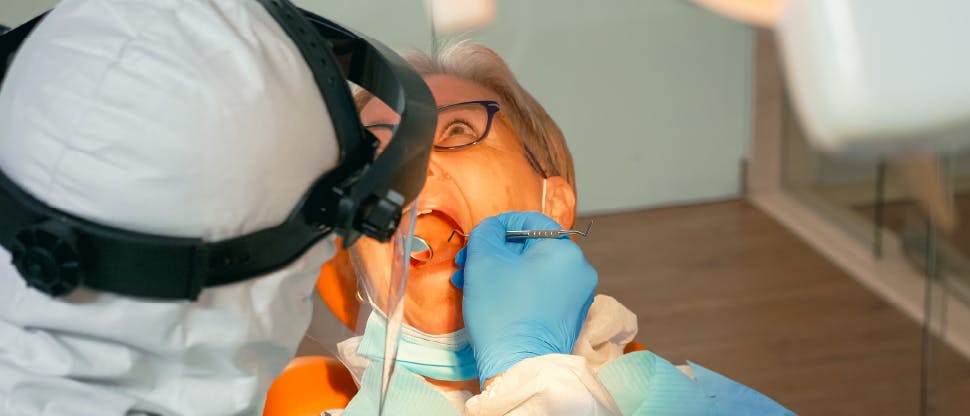Gingivitis Diagnosis

Diagnosing Gum Disease
Early detection of the clinical signs of gingivitis is key to preventing the disease1
Gingivitis is the early stage of periodontal disease. It causes the gums to become red, swollen, and bleed easily. Gingivitis is often caused by inadequate oral hygiene but is reversible with professional treatment and good oral home care. Untreated gingivitis can advance to periodontitis and can eventually lead to tooth loss and other health problems.1
Plaque induced gingivitis is defined as inflammation of the gingiva in the absence of clinical attachment loss. Gingivitis may be characterized by the presence of any of the following clinical signs:2
- redness and edema of the gingival tissue
- bleeding upon provocation
- changes in contour and consistency
- presence of calculus and/or plaque
- no radiographic evidence of crestal bone loss
History Taking
Assessment of your patient’s gum health profile should begin when they first walk into your consulting room – with history taking being an important part of this process.2 It’s recommended that you ask open questions at first to allow for unbiased answers, and then move on to more specific questions about their symptoms.
According to the American Academy of Periodontology risk factors include:3
- Age – over 70% of Americans 65+ have periodontal disease
- Smoking/tobacco use
- Genetic susceptibility – family history
- Stress
- Medications – some drugs e.g. antidepressants and heart medication can affect oral health
- Clenching or grinding teeth may speed up progression of destruction of tissues
- Poor nutrition/obesity
- Systemic diseases e.g. diabetes/CVD
Patient history should include any possible risk factors for periodontal disease
Detailed Periodontal Charting
Radiographs form an essential part of periodontal assessment and diagnosis, and can aid in determining the prognosis of specific teeth. Viewing the morphology of affected teeth and the extent of alveolar bone loss is also important for long-term management of patients impacted by periodontitis.4
Radiographic exposures should be:4
- Views based on the patient's presentation
- Clinically justified
- Of suitable quality to provide a clear benefit to the patient
Radiographs show features of the periodontium on a horizontal bitewing film
Help Your Patients on Their Journey to Optimal Gum Health
Causes and Mechanisms
Find out about the causes and mechanisms behind periodontal disease.
